3000yr Old Poombarai Murugan Temple
Poombarai Murugan Temple, also known as Kuzhandhai Velappar Temple, is a Hindu temple dedicated to Lord Murugan, located in the village of Poombarai, near Kodaikanal in Tamil Nadu, India. The temple is renowned for its unique idol of Lord Murugan, made from a special amalgam of nine poisons called Navapashanam.
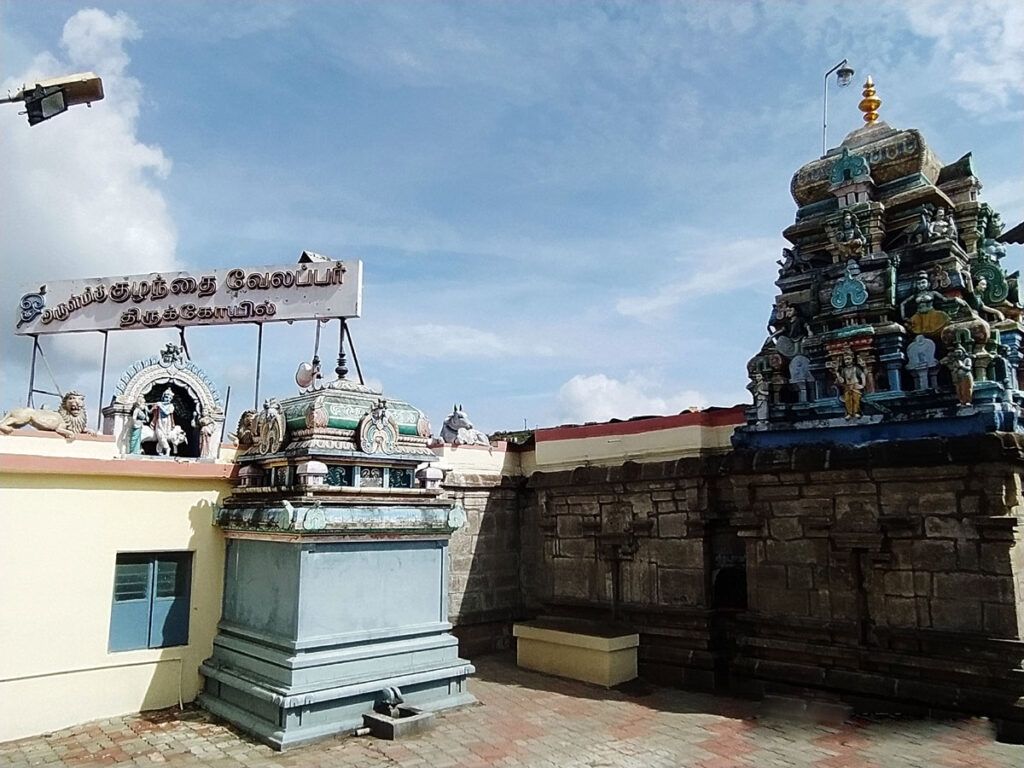
Contents
- 1 Poombarai Murugan Temple History:
- 2 Legend of Poombarai Murugan Temple:
- 3 Significance of Poombarai Murugan Temple:
- 4 Myths and beliefs of Poombarai Murugan Temple:
- 5 Poombarai Murugan Temple Timing and Rituals:
- 6 Places to visit near Poombarai Murugan Temple:
- 7 FAQ:
- 7.0.1 Q: Where is Kuzhanthai Velappar Temple located?
- 7.0.2 Q: What is the history of Kuzhanthai Velappar Temple?
- 7.0.3 Q: What is the significance of Kuzhanthai Velappar Temple?
- 7.0.4 Q: What are the festivals celebrated at Kuzhanthai Velappar Temple?
- 7.0.5 Q: How can I get to Kuzhanthai Velappar Temple?
- 7.0.6 Q: What are the opening hours of Kuzhanthai Velappar Temple?
- 7.0.7 Q: What are the main features of Kuzhanthai Velappar Temple?
- 7.0.8 Q: What are the dress code requirements for visiting the Kuzhanthai Velappar Temple?
- 7.0.9 Q: What are the other things to see and do in Poombarai?
- 7.0.10 Q: What are the accommodation options near Kuzhanthai Velappar Temple?
- 7.0.11 Q: What are the dining options near Kuzhanthai Velappar Temple?
- 7.0.12 Q: What are the shopping options near Kuzhanthai Velappar Temple?
- 8 How to reach Poombarai Murugan Temple:
- 9 Google Maps:
Poombarai Murugan Temple History:
Ancient Origins and Mystical Construction:
- The temple’s age is shrouded in mystery, with claims ranging from 3,000 years old to a more conservative estimate of construction between the 10th and 12th centuries.
- Legend attributes its creation to the sage Bogar, one of the eighteen revered siddhas in Tamil culture. Bogar is believed to have crafted the captivating idol of Lord Muruga from an amalgam of nine poisons, known as “navapashanam,” imbuing it with potent mystical power.
Unique Idol and Divine Manifestation:
- The central deity of the temple is Kuzhanthai Velappar, a captivating manifestation of Lord Muruga as a young recluse, shorn of his usual adornments. This form is said to have emerged during a confrontation with a demon, where Muruga chose humility and simplicity to overcome evil.
- The idol’s unique composition of navapashanam is believed to possess healing properties and attract devotees seeking divine blessings for various ailments.
Read More>> Arupadai veedu | Six Abodes of Lord Murugan
Legend of Poombarai Murugan Temple:
The legend of Poombarai Murugan Temple revolves around the enigmatic figure of Bhogar, one of the revered 18 Siddhas of Tamil Nadu. Bhogar, renowned for his alchemical prowess and mystical abilities, is believed to have sculpted the temple’s central deity, the resplendent idol of Lord Murugan.
Crafted from a unique blend of nine potent poisons, known as Navapashanam, the idol is said to possess remarkable properties. Legend has it that when mixed in precise proportions, Navapashanam transforms from a potent venom into an elixir of immortality. Bhogar, wielding his alchemical mastery, is said to have imbued the idol with this divine essence, making it a powerful conduit for blessings and divine protection.
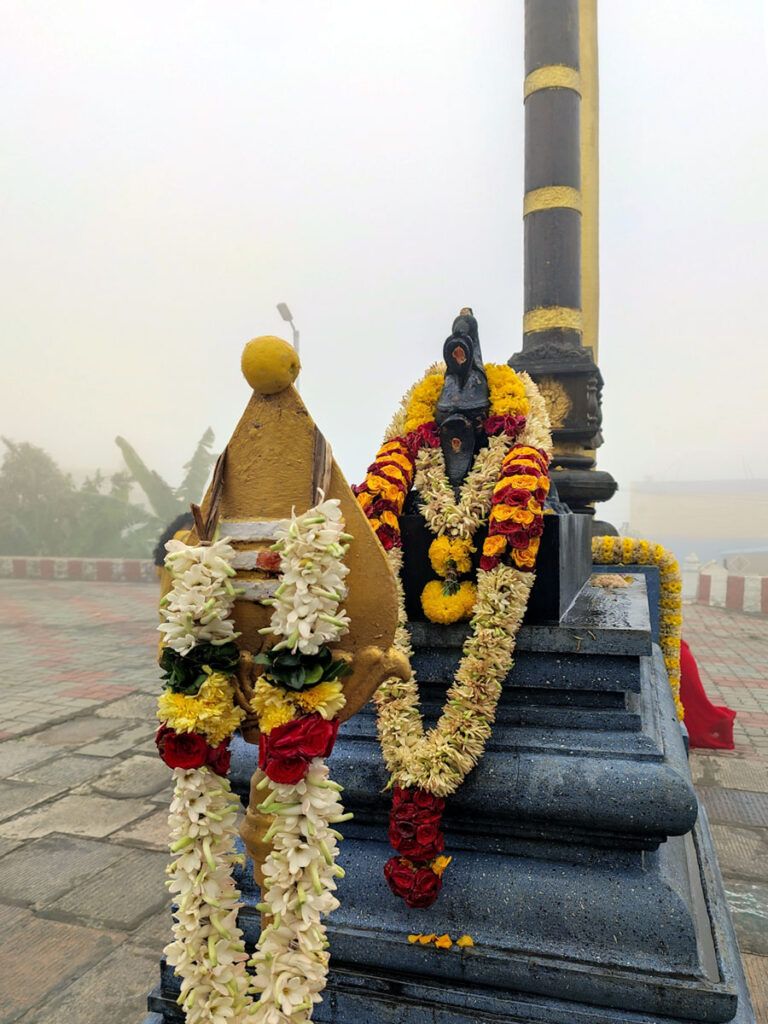
The Miraculous Manifestation: Kuzhanthai Velappar
The idol of Lord Murugan in Poombarai is fondly called Kuzhanthai Velappar, meaning “infant Murugan with the spear.” The legend behind this moniker is as fascinating as the idol itself.
As the story goes, while sculpting the idol, Bhogar became so engrossed in crafting the exquisitely detailed face that he ran out of time to complete the rest of the body. Consequently, the idol’s face bears an unmatched finesse, while the body remains relatively unpolished.
However, this perceived imperfection is said to have led to a miraculous transformation. When Bhogar completed the idol, it miraculously manifested as a playful child, radiating divine energy. This divine child, Kuzhanthai Velappar, continues to be the beloved deity of the temple, captivating devotees with his childlike charm and boundless blessings.
The Rediscovery and Royal Intervention
The legend of Poombarai Murugan Temple takes a dramatic turn with the tale of King Perumal, a Chera Dynasty monarch who ruled between the 2nd and 5th centuries AD. Lost while hunting in the dense forests surrounding the temple, Perumal stumbled upon the then-forgotten shrine. In a dream that night, Lord Murugan appeared to him, urging him to restore the temple to its former glory.
Heeding the divine call, King Perumal led a grand effort to restore the temple and its idol. The once-neglected shrine was transformed into a vibrant center of worship, attracting devotees from far and wide. The legend of Kuzhanthai Velappar and Bhogar’s mystical artistry spread like wildfire, solidifying the temple’s place as a sacred pilgrimage site.
Read More>> Subramanya Swamy Temple at Pazhamudircholai
Enduring Legacy and Modern-Day Significance
Today, the Poombarai Murugan Temple stands as a testament to the enduring power of faith and legend. Devotees flock to the temple, seeking blessings from Kuzhanthai Velappar, the divine child who embodies hope, resilience, and divine grace. The temple’s unique architecture, serene surroundings, and captivating lore continue to enthrall visitors, making it a must-visit destination for those seeking spiritual solace and a glimpse into the mystical world of Tamil Nadu’s rich cultural heritage.
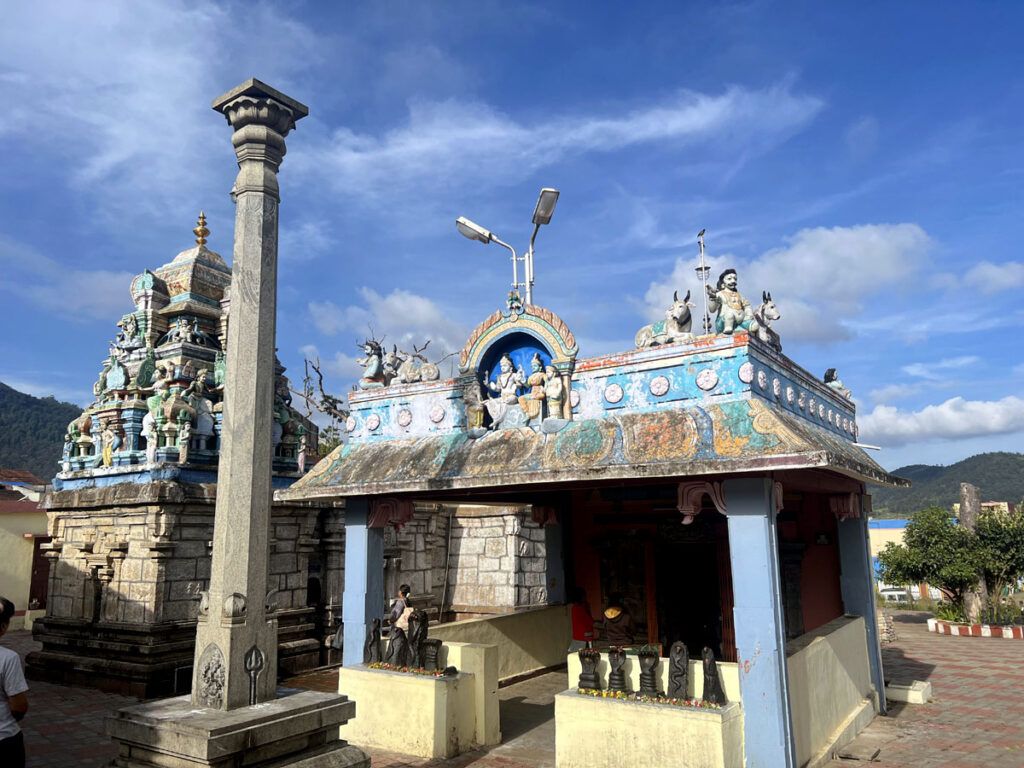
Significance of Poombarai Murugan Temple:
Religious significance: The temple is an important pilgrimage site for Hindus from all over Tamil Nadu and India. Lord Murugan is believed to be especially powerful and benevolent in this temple, and devotees come here to seek his blessings for success, health, and happiness.
Historical significance: The temple is believed to be one of the oldest Murugan temples in Tamil Nadu. Some legends say that it was built by the Pandava brothers during their exile in the forest.
Architectural significance: The temple is built in the Dravidian style of architecture, with a gopura (gateway tower) and a sanctum sanctorum (inner sanctum) where the idol of Lord Murugan is located. The temple is surrounded by beautiful hills and forests, which add to its serene atmosphere.
Cultural significance: The Ther Thiruvizha festival is a major cultural event in Poombarai. The festival features a procession of Lord Murugan’s idol on a decorated chariot, accompanied by music and dance.
Read More>> Brihadeeswarar Temple: Timeless Marvel of Chola Architecture
Myths and beliefs of Poombarai Murugan Temple:
The Enchanting Legend of Kuzhanthai Velappar:
One of the most prominent myths surrounding the temple revolves around the deity’s very form. It’s believed that the sage Bogar, one of the 18 Siddhas, crafted the idol of Muruga from Navapashanam, a potent concoction of nine poisons. This unique composition is said to possess immense healing powers, rendering the idol an embodiment of divine medicine.
The idol, affectionately called Kuzhanthai Velappar, meaning “infant with the spear,” depicts Muruga in a youthful form, shorn of his hair and ornaments. This unusual portrayal is attributed to another legend, where Muruga manifested as a child to save the renowned poet Arunagiri Nathar from a demon.
Unique Traditions and Rituals:
The temple pulsates with a vibrant tapestry of customs and rituals that reflect the deep faith of its devotees. Some of the most notable practices include:
- Head Shaving: Devotees seeking blessings often choose to shave their heads, emulating the youthful Muruga of Poombarai. This act symbolizes surrender, detachment, and a renewed commitment to spiritual growth.
- Rakkala Chandaṇam: Sandalwood paste applied to the idol’s head overnight is believed to acquire potent medicinal properties. This sacred paste, known as Rakkala Chandaṇam, is distributed among devotees as a divine blessing.
- Fire Walking: During the Skanda Sashti festival, devotees display their unwavering faith by walking barefoot over hot coals. This fiery ordeal signifies their devotion and willingness to conquer inner demons.
- Offering Prayers with Vilva Leaves: Bilva leaves, considered sacred to Lord Muruga, are used to offer prayers and petitions. Devotees believe that sincere prayers offered with these leaves reach the divine ears swiftly.
Beyond the Myths:
The Poombarai Murugan Temple’s significance transcends mere mythology. It serves as a beacon of hope and healing for countless devotees. The temple’s serene atmosphere, coupled with the powerful beliefs associated with it, draws individuals seeking spiritual solace, physical well-being, and a deeper connection with the divine.
Whether seeking the divine touch of the Navapashanam idol, experiencing the transformative power of rituals, or simply basking in the temple’s mystical aura, the Poombarai Murugan Temple offers a unique and enriching experience for all.
Read More>> Tripura Sundari Temple in Tripura
Intrigued by the stories of Poombarai? Here are some additional facts to pique your interest:
- The temple’s architecture is a harmonious blend of Dravidian and Kerala styles, showcasing intricate carvings and sculptures.
- The surrounding hills are said to be infused with positive energy, making the temple a perfect spot for meditation and spiritual contemplation.
- The temple has been featured in several Tamil films and documentaries, further solidifying its cultural significance.
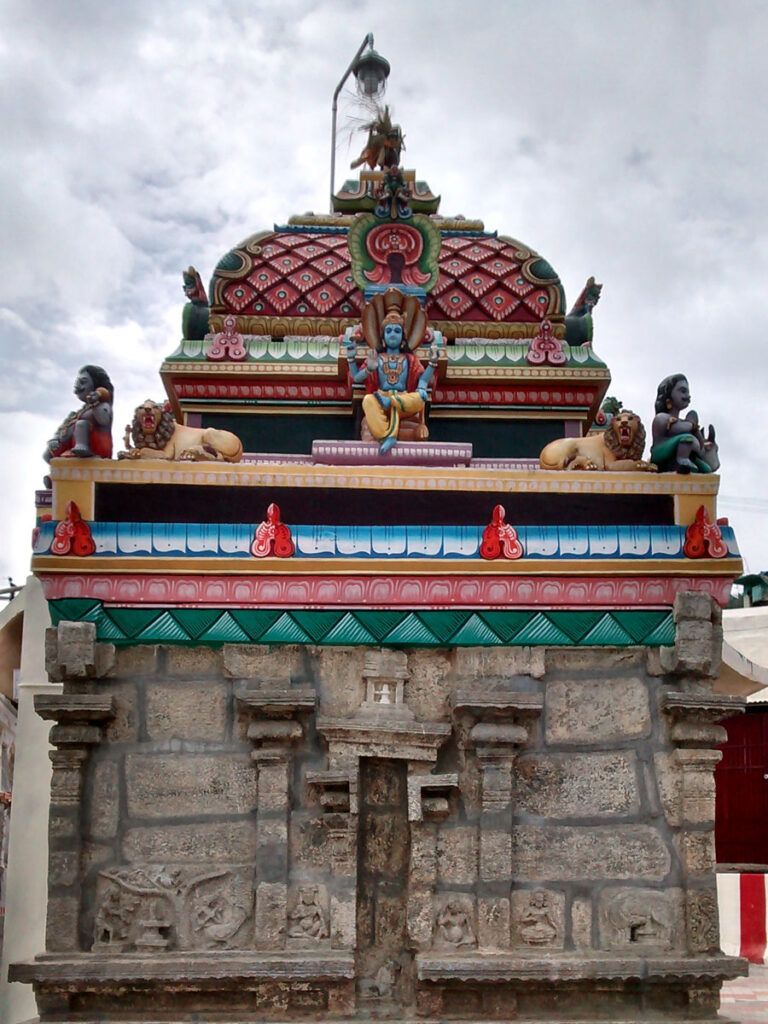
Poombarai Murugan Temple Timing and Rituals:
Temple Timings:
- The temple is open from 6:00 AM to 12:00 PM and 4:00 PM to 8:00 PM.
- Darshan of the Lord is available throughout the day.
- Special pujas are performed on Tuesdays and Fridays.
Rituals:
- Abhishekam: This is a ritualistic bath performed on the idol of the Lord with milk, honey, ghee, and other sacred substances. Abhishekam is believed to be very auspicious and is performed to seek the blessings of the Lord.
- Archana: This is a puja performed by a priest, chanting mantras and offering flowers, incense, and fruits to the Lord. Archana is believed to please the Lord and fulfill one’s desires.
- Deeparadanai: This is a ritual of lighting lamps before the idol of the Lord. Deeparadanai is believed to ward off evil and negativity.
- Thirumanjanam: This is a ritual of applying sandal paste on the forehead of the idol of the Lord. Thirumanjanam is believed to be a sign of respect and devotion to the Lord.
Other important rituals:
- Kavadi: This is a devotional offering made to the Lord by carrying a decorated pot on the shoulder.
- Palabhishekam: This is a ritual of pouring milk on the idol of the Lord. Palabhishekam is believed to be very auspicious and is performed to seek the blessings of the Lord for children.
- Firewalking: This is a ritual performed by devotees walking barefoot on hot coals. Firewalking is believed to be a test of faith and devotion.
Read More>> Gandaki Shakti Peeth Muktinath Temple
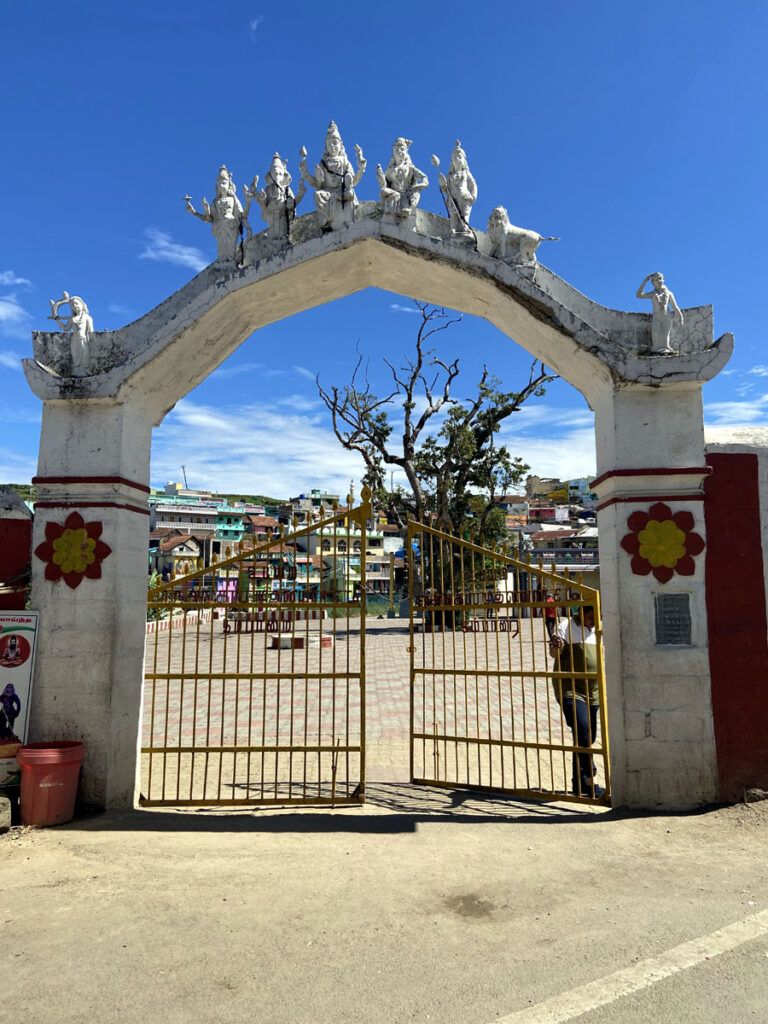
Places to visit near Poombarai Murugan Temple:
- Kodaikanal:
- Kodaikanal is a popular hill station located about 32 kilometers from Poombarai. It offers beautiful landscapes, pleasant weather, and attractions like Kodaikanal Lake, Bryant Park, Coaker’s Walk, and Pillar Rocks.
- Berijam Lake:
- Located around 20 kilometers from Kodaikanal, Berijam Lake is a serene and less-crowded lake surrounded by lush greenery. It is a great place for nature lovers and bird watchers.
- Silver Cascade Falls:
- This waterfall is located on the Ghat Road, about 8 kilometers from Kodaikanal. The waterfall is surrounded by greenery and is a good spot to take a break during your journey.
- Pillar Rocks:
- These are a set of three giant rock pillars in Kodaikanal, offering breathtaking views of the surrounding hills and valleys. It’s a popular viewpoint and picnic spot.
- Dolphin’s Nose:
- Dolphin’s Nose is a flat rock projecting over a breathtaking gorge. It offers stunning views of the surrounding hills and the plains below. The trek to Dolphin’s Nose is also a memorable experience.
- Bryant Park:
- Located near Kodaikanal Lake, Bryant Park is a well-maintained botanical garden with a wide variety of flowers, plants, and trees. It’s a peaceful place for a leisurely stroll.
- Manjalar Dam:
- Situated around 24 kilometers from Poombarai, the Manjalar Dam is surrounded by hills and forests, offering a tranquil environment. It’s a good spot for a peaceful day outing.
- Bear Shola Falls:
- Located around 2 kilometers from Kodaikanal, Bear Shola Falls is a seasonal waterfall surrounded by thick vegetation. It’s a good place to visit during the monsoon season when the waterfall is at its best.
Read More>> Sri Puri Jagannath Temple: The Lord of the Universe
FAQ:
Q: Where is Kuzhanthai Velappar Temple located?
A: Kuzhanthai Velappar Temple is located in Poombarai, a small village in the Dindigul district of Tamil Nadu, India. It is about 18 kilometers from Kodaikanal.
Q: What is the history of Kuzhanthai Velappar Temple?
A: Kuzhanthai Velappar Temple is believed to be one of the oldest Murugan temples in India, dating back to the 3rd century AD. It is believed that the temple was built by the Chola dynasty.
Q: What is the significance of Kuzhanthai Velappar Temple?
A: Kuzhanthai Velappar Temple is a major pilgrimage center for Hindus. It is believed that the temple is a powerful place to worship Murugan. The temple is also known for its beautiful architecture and its serene setting.
Q: What are the festivals celebrated at Kuzhanthai Velappar Temple?
A: The most important festival celebrated at Kuzhanthai Velappar Temple is the Vela Festival, which is held in the month of May. The festival is a nine-day celebration that includes processions, music, and dance.
Q: How can I get to Kuzhanthai Velappar Temple?
A: Kuzhanthai Velappar Temple is easily accessible by road. There are regular buses from Kodaikanal to Poombarai. You can also hire a taxi or drive yourself.
Q: What are the opening hours of Kuzhanthai Velappar Temple?
A: Kuzhanthai Velappar Temple is open daily from 6:00 am to 8:00 pm.
Q: What are the main features of Kuzhanthai Velappar Temple?
A: The temple is a simple structure with a single tower. The main shrine houses the idol of Lord Murugan in his child form. The idol is made of panchaloha, a five-metal alloy.
The temple also has a number of other shrines dedicated to other Hindu deities, including Ganesha, Shiva, and Parvati. There is also a large pond located in front of the temple.
Q: What are the dress code requirements for visiting the Kuzhanthai Velappar Temple?
A: Visitors are expected to dress modestly when visiting the temple. Men should wear full-length pants and shirts, and women should wear skirts or dresses that cover the knees. Visitors should also remove their shoes before entering the temple.
Q: What are the other things to see and do in Poombarai?
A: In addition to the Kuzhanthai Velappar Temple, there are a number of other things to see and do in Poombarai, including:
- Poombarai Lake: This lake is a popular spot for swimming, boating, and fishing.
- Poombarai Falls: These waterfalls are located about 3 kilometers from the village of Poombarai.
- Poombarai Forest: This forest is home to a variety of plants and animals, including elephants, tigers, and leopards.
Q: What are the accommodation options near Kuzhanthai Velappar Temple?
A: There are several hotels and resorts near Kuzhanthai Velappar Temple. Some of the popular options include:
- The Blue Mountain Resorts
- The Sterling Club
- The Grand Chola
Q: What are the dining options near Kuzhanthai Velappar Temple?
A: There are several restaurants near Kuzhanthai Velappar Temple. Some of the popular options include:
- The Blue Mountain Restaurant
- The Sterling Club Restaurant
- The Grand Chola Restaurant
Q: What are the shopping options near Kuzhanthai Velappar Temple?
A: There are several shops near Kuzhanthai Velappar Temple that sell souvenirs, religious items, and other goods. Some of the popular options include:
- The Poombarai Handicraft Shop
- The Poombarai Souvenir Shop
- The Poombarai Religious Items Shop
How to reach Poombarai Murugan Temple:
By Air: The nearest airport to Kodaikanal is Madurai International Airport (IXM), which is approximately 120 kilometers away. From the airport, you can hire a taxi or use other local transportation to reach Poombarai.
By Train: The nearest major railway station to Kodaikanal is Kodai Road Railway Station, which is around 80 kilometers away. From the railway station, you can hire a taxi or use local buses to reach Kodaikanal. After reaching Kodaikanal, you can further travel to Poombarai.
By Road:
- From Kodaikanal: Poombarai is about 18 kilometers away from Kodaikanal. You can hire a taxi or use local buses to reach Poombarai from Kodaikanal.
- From Other Cities: If you are coming from other cities, you can reach Kodaikanal by road. The nearest major cities with good road connectivity to Kodaikanal include Madurai, Coimbatore, and Chennai. Once you reach Kodaikanal, you can follow the directions mentioned above.
